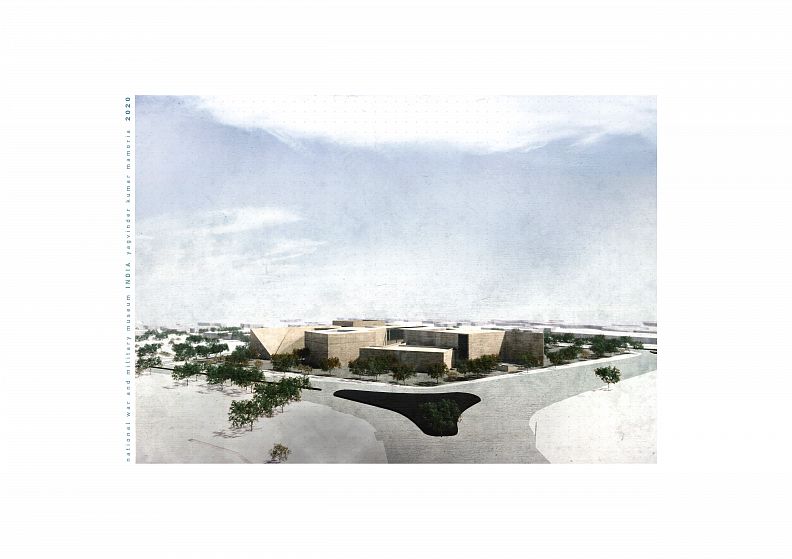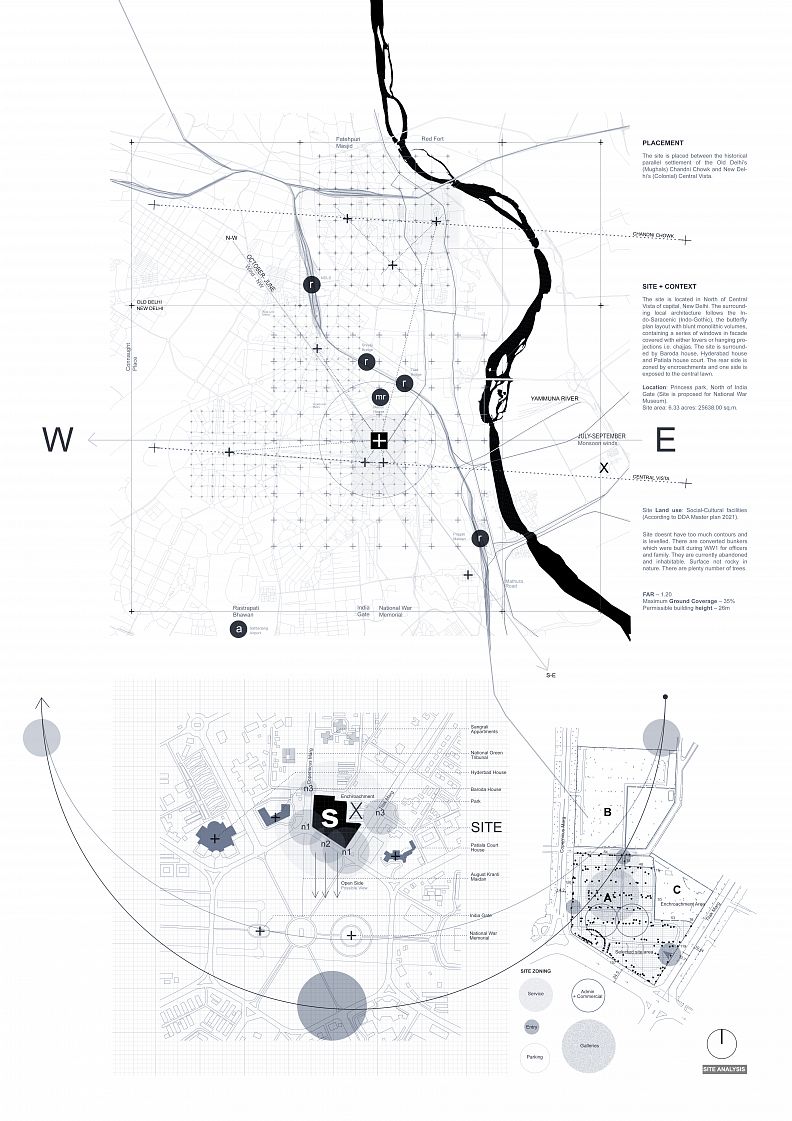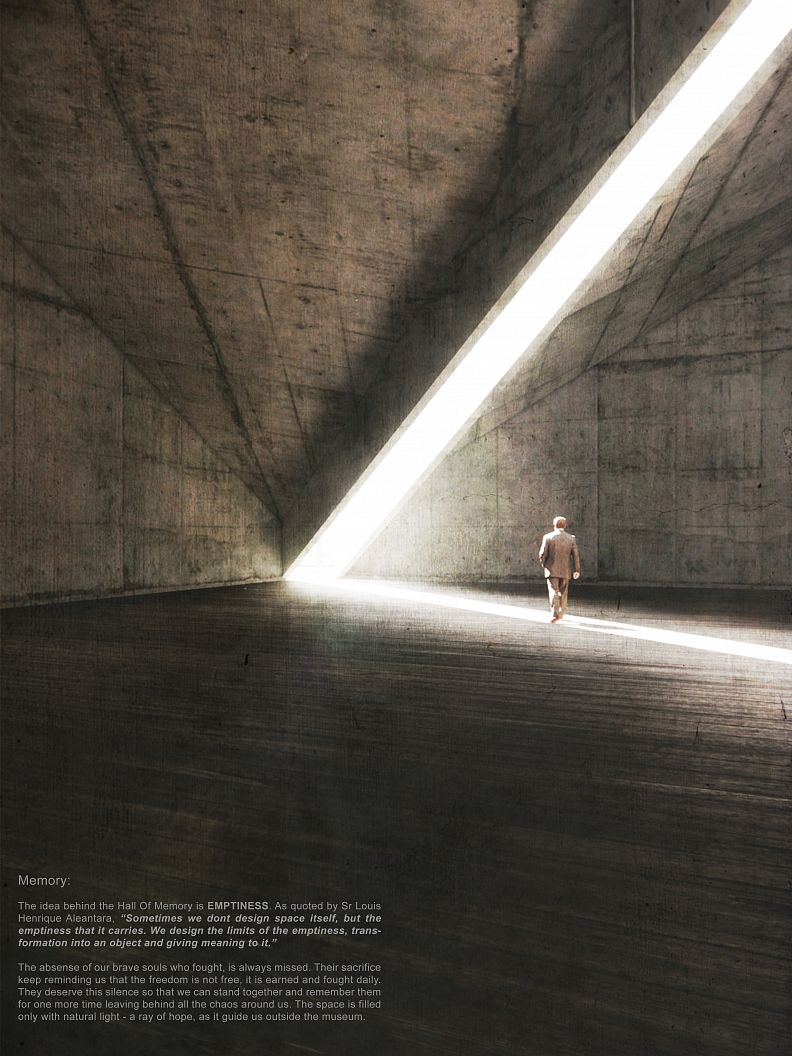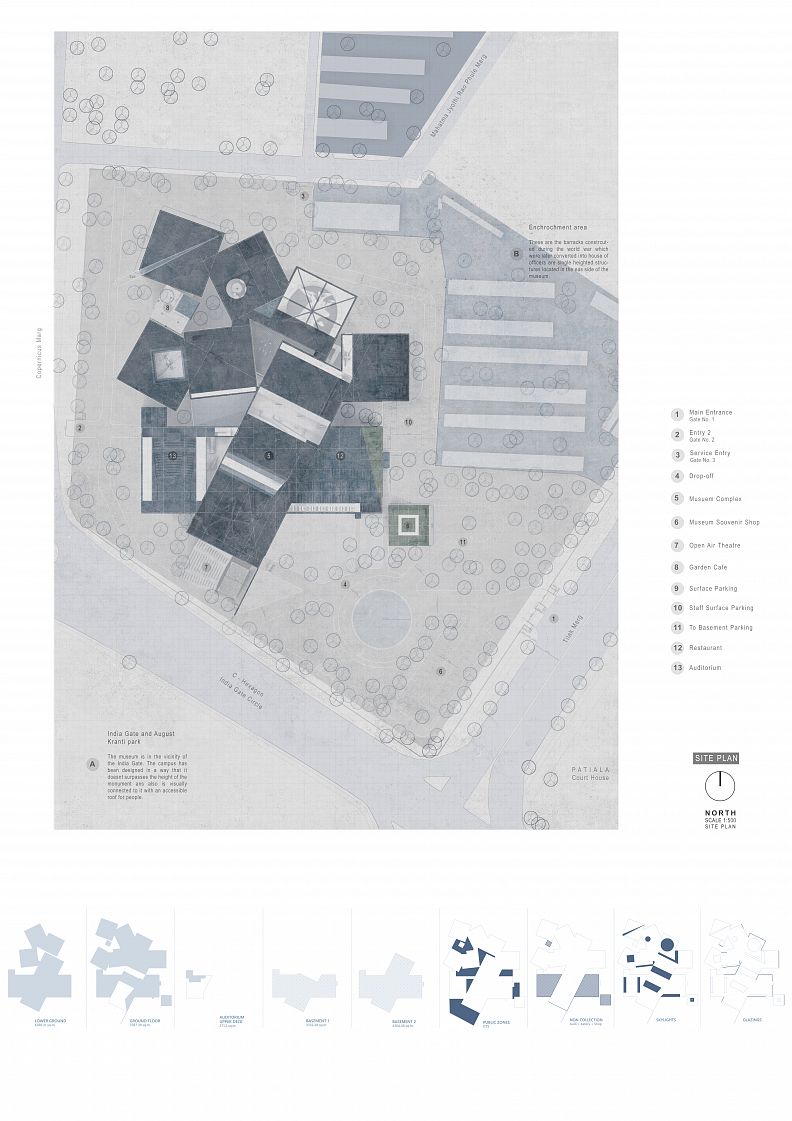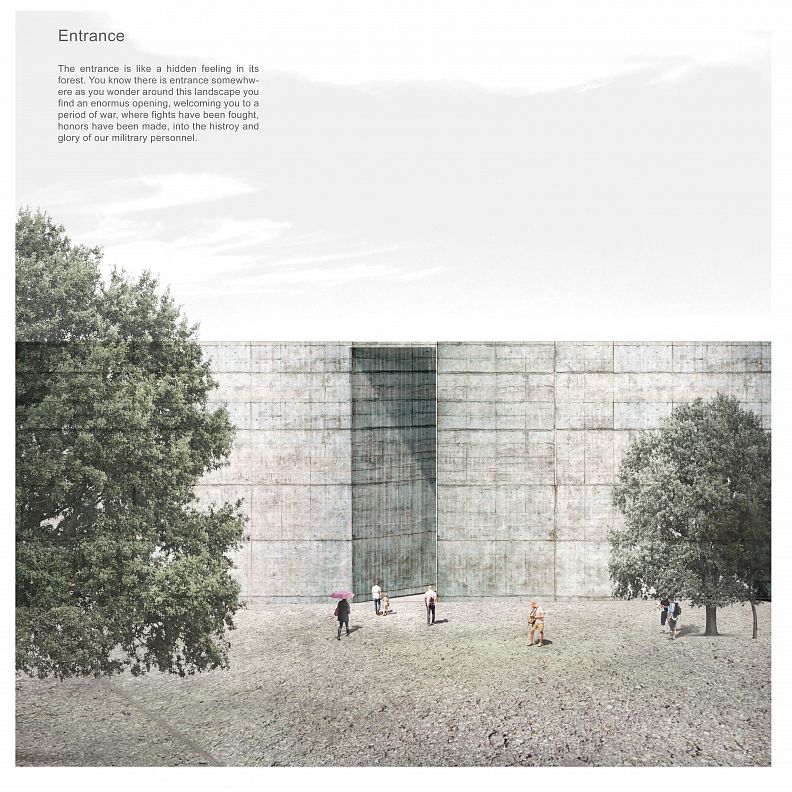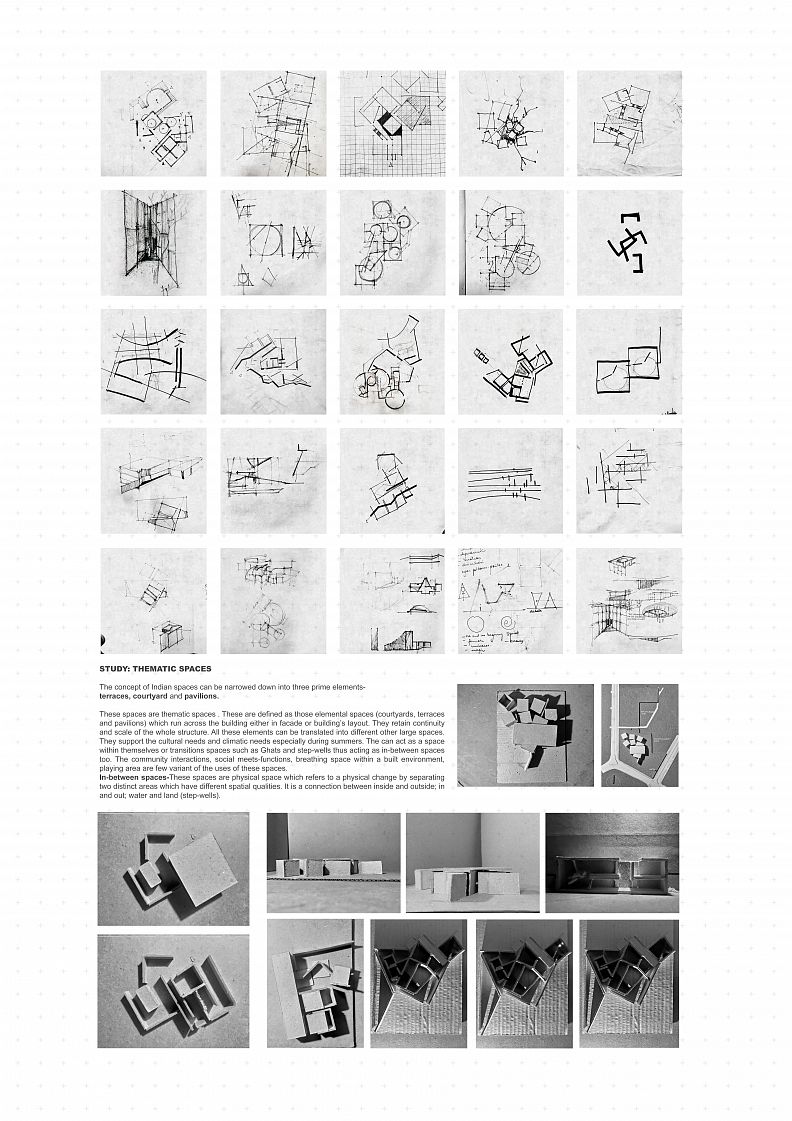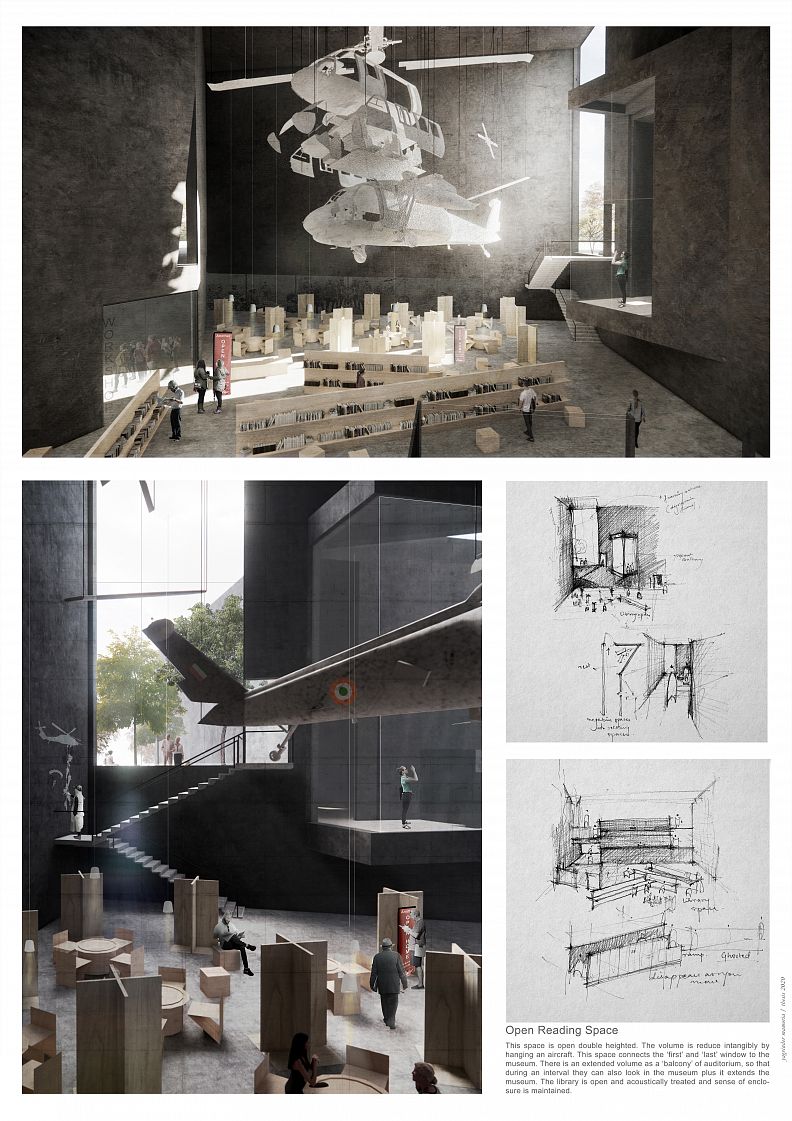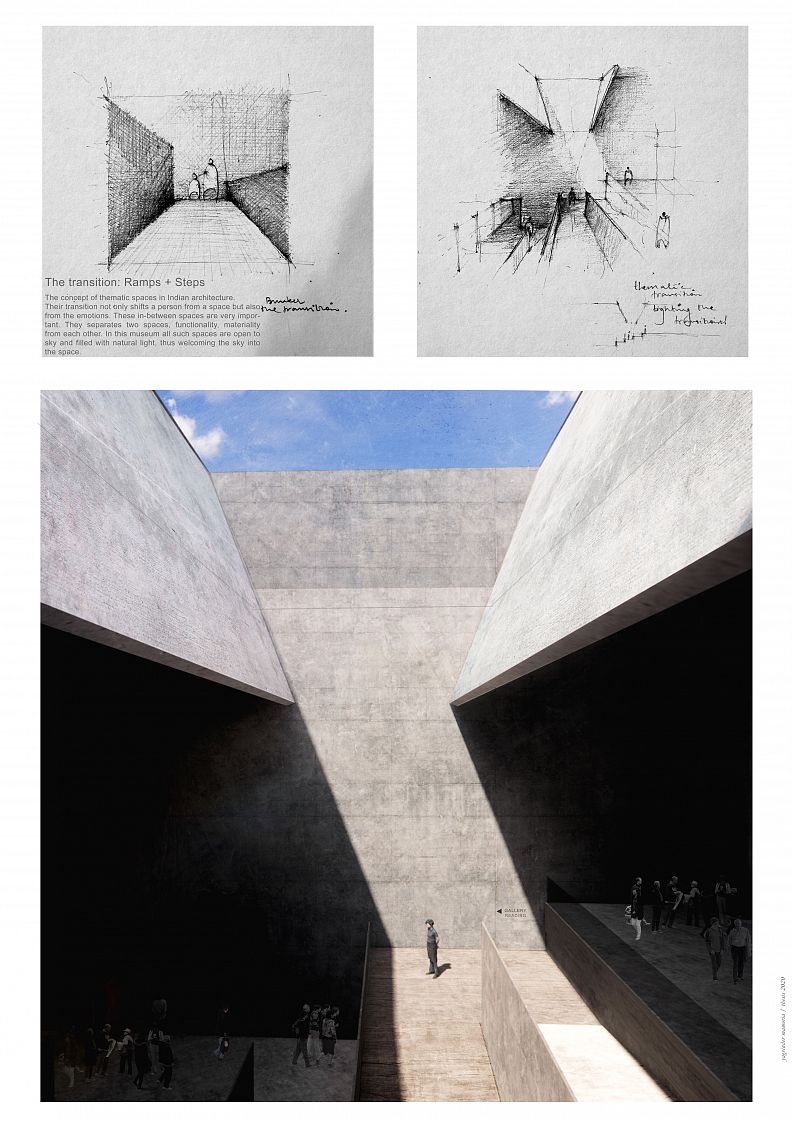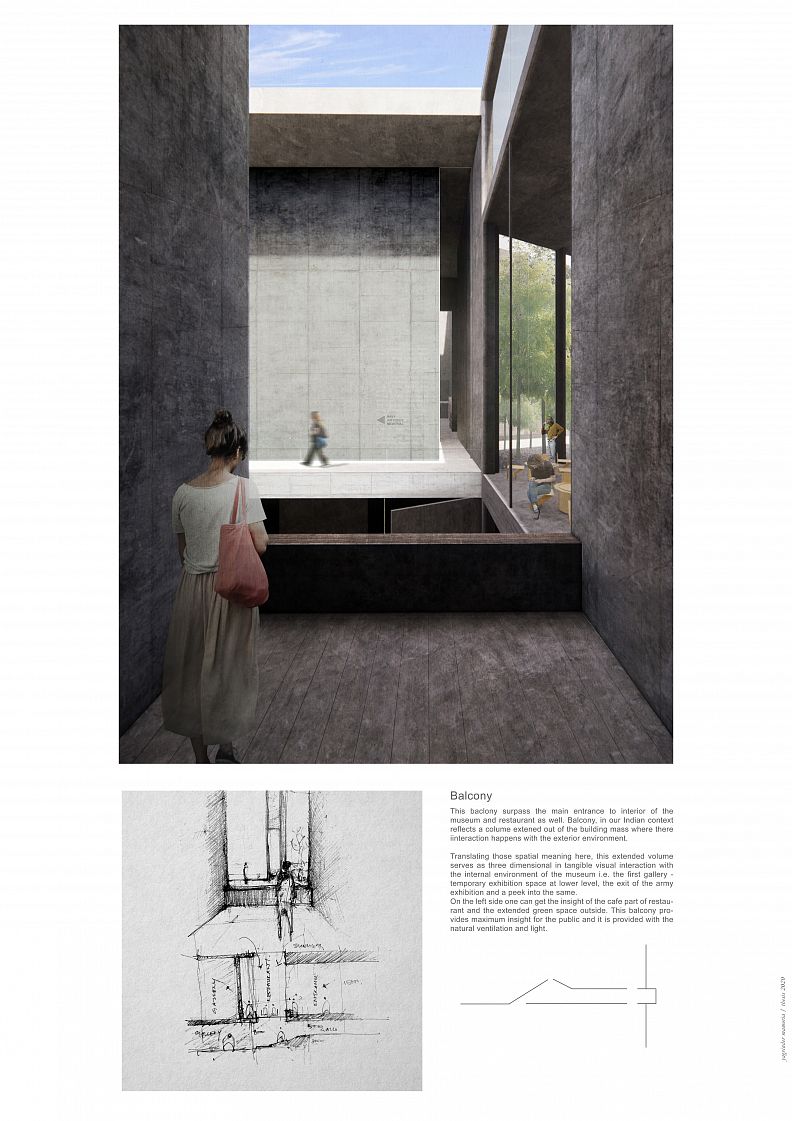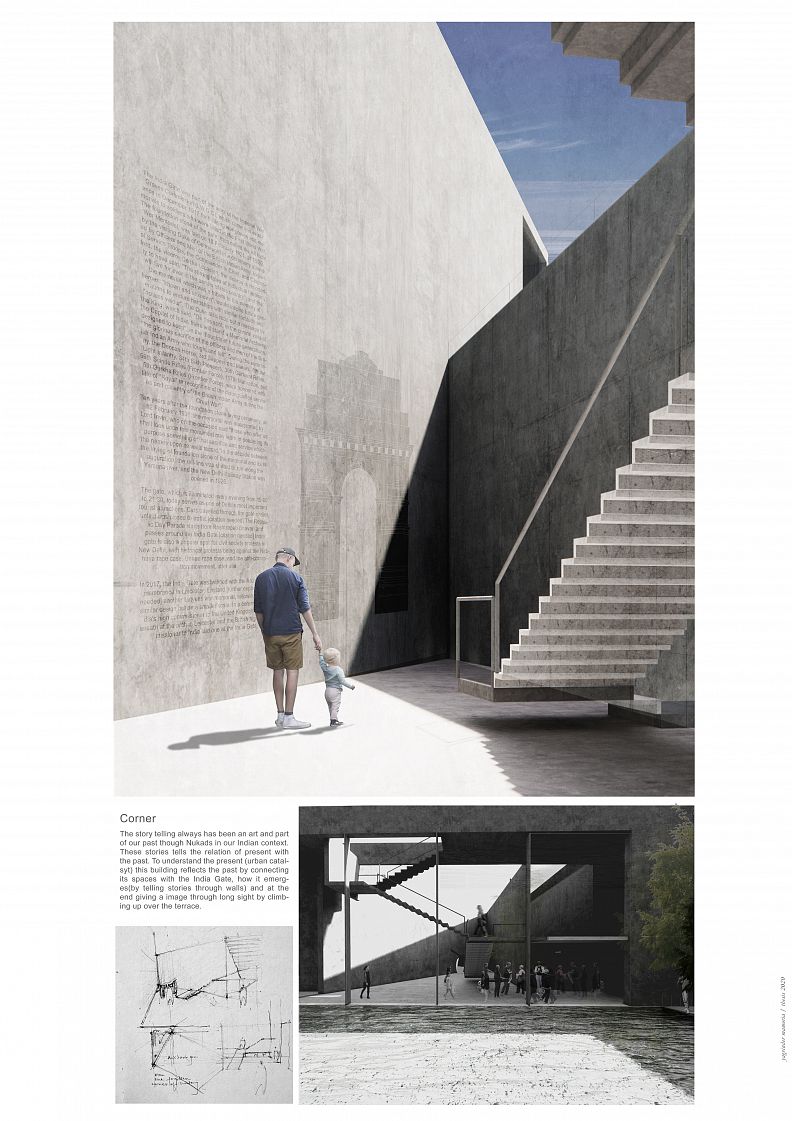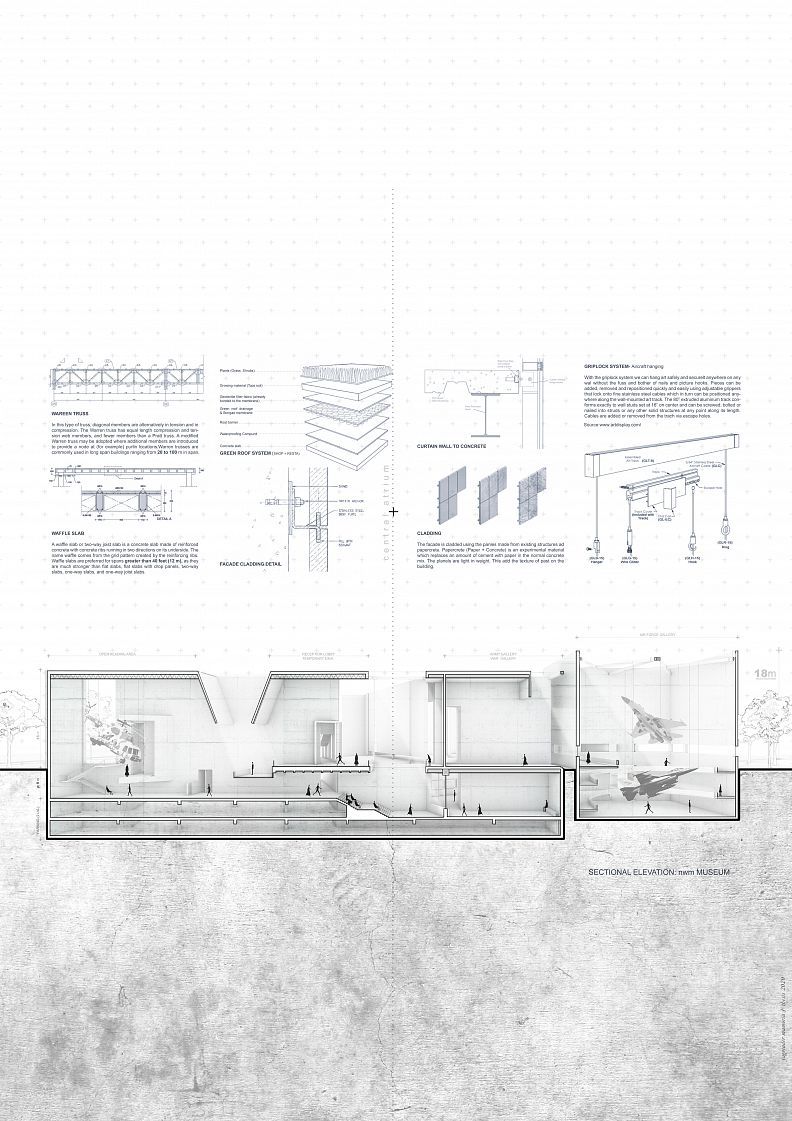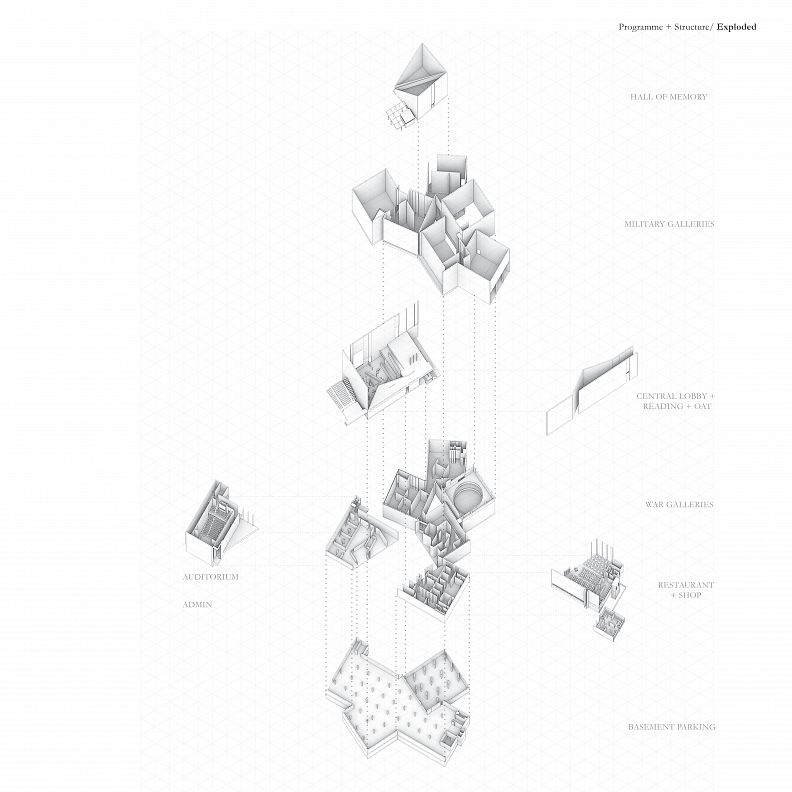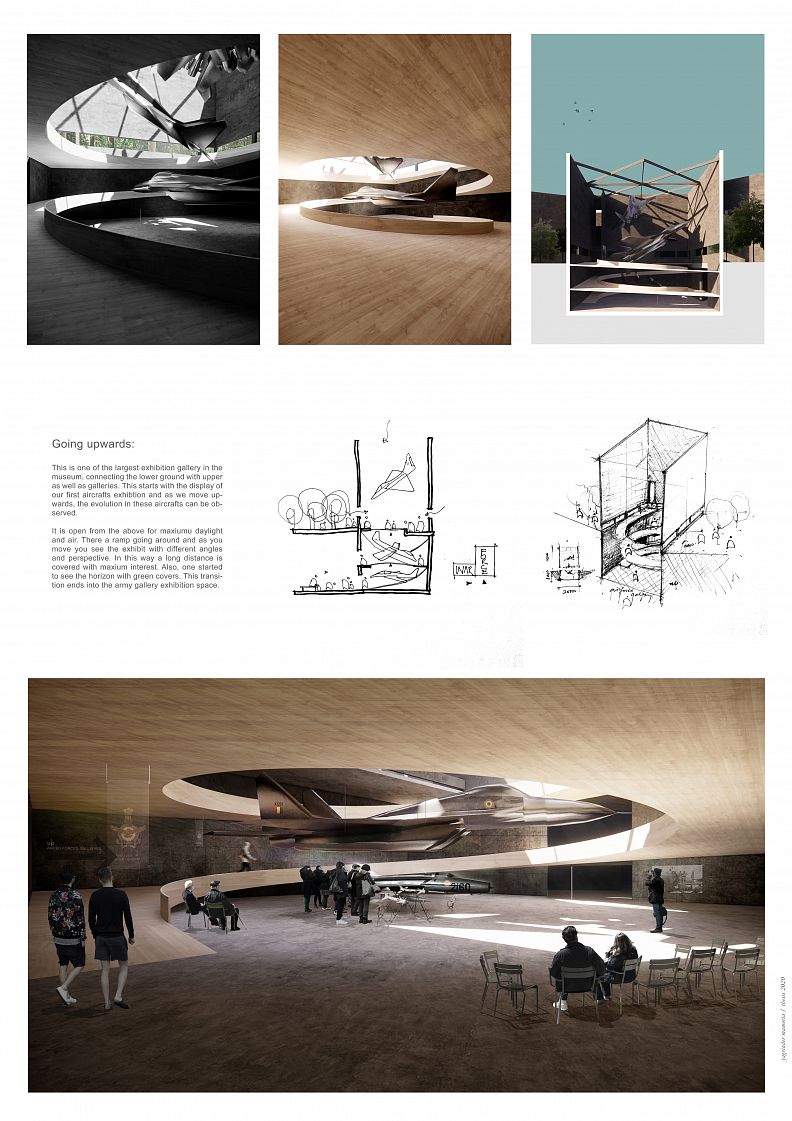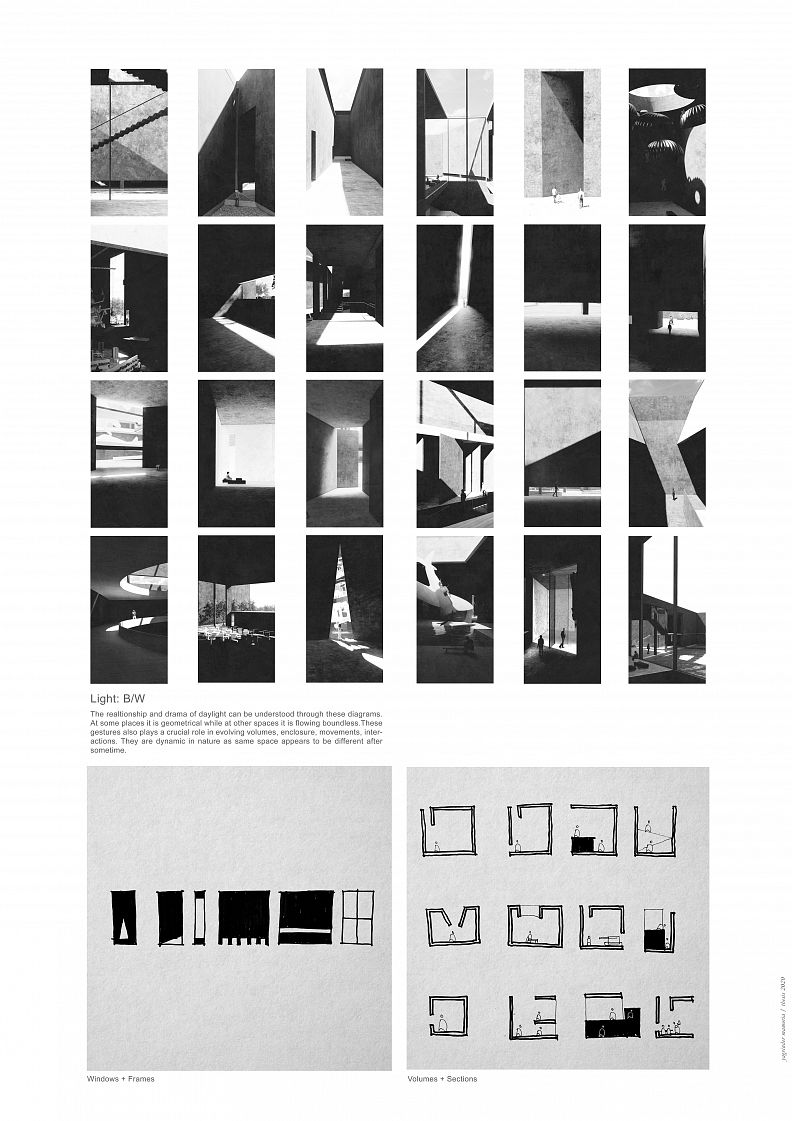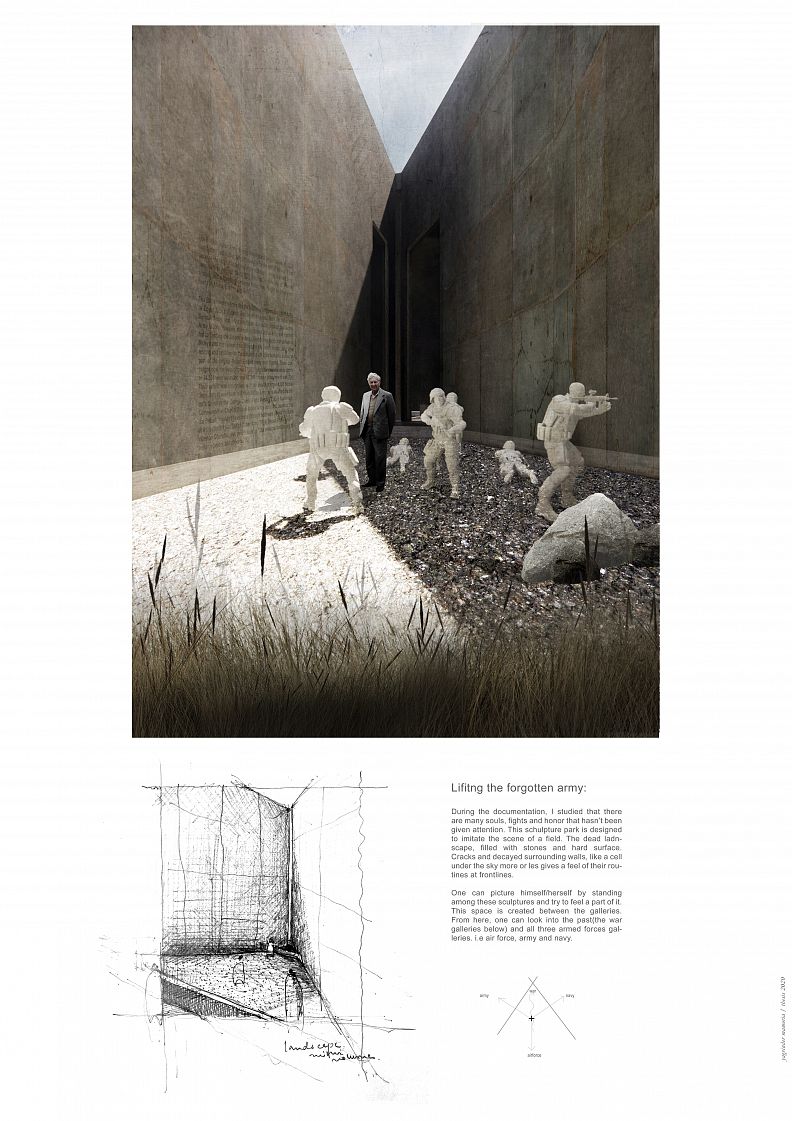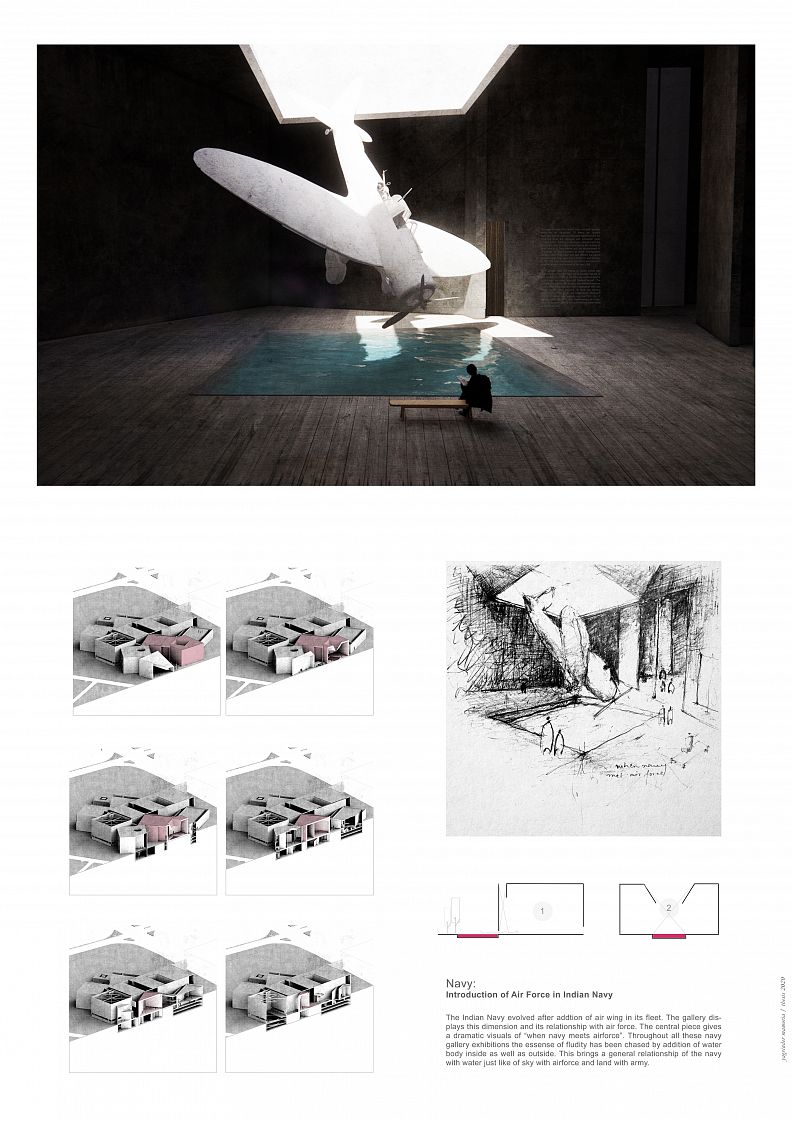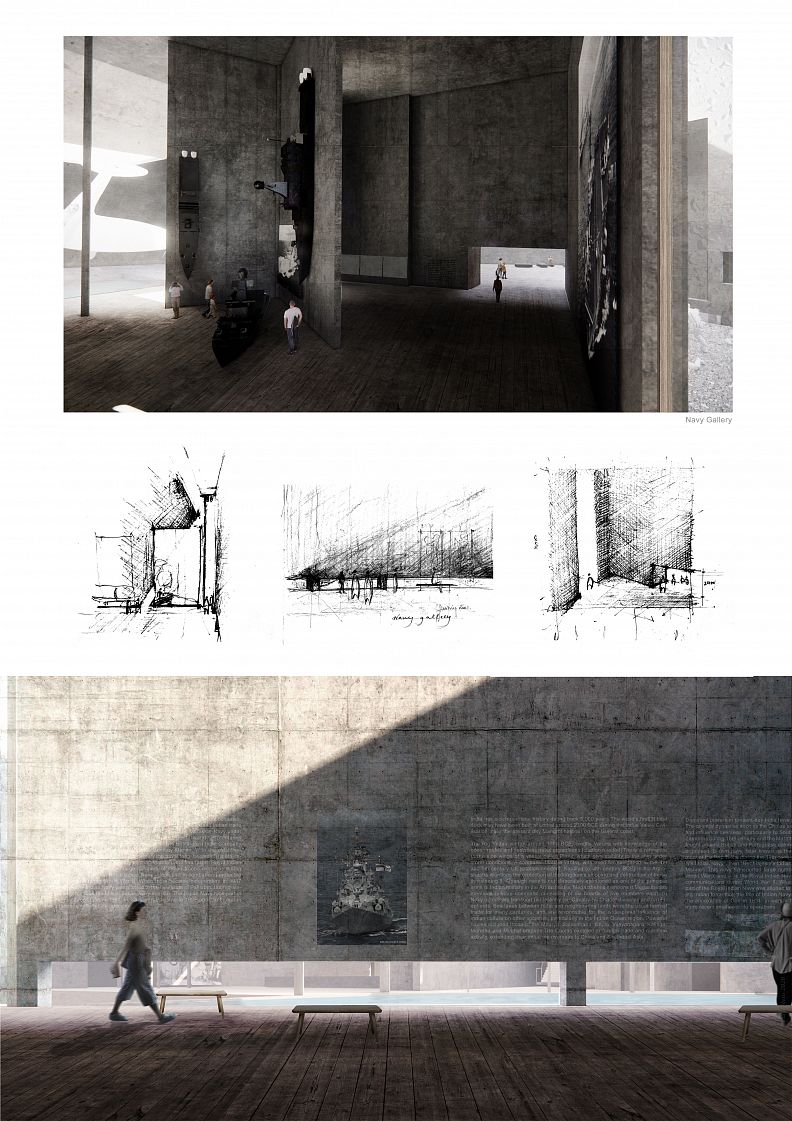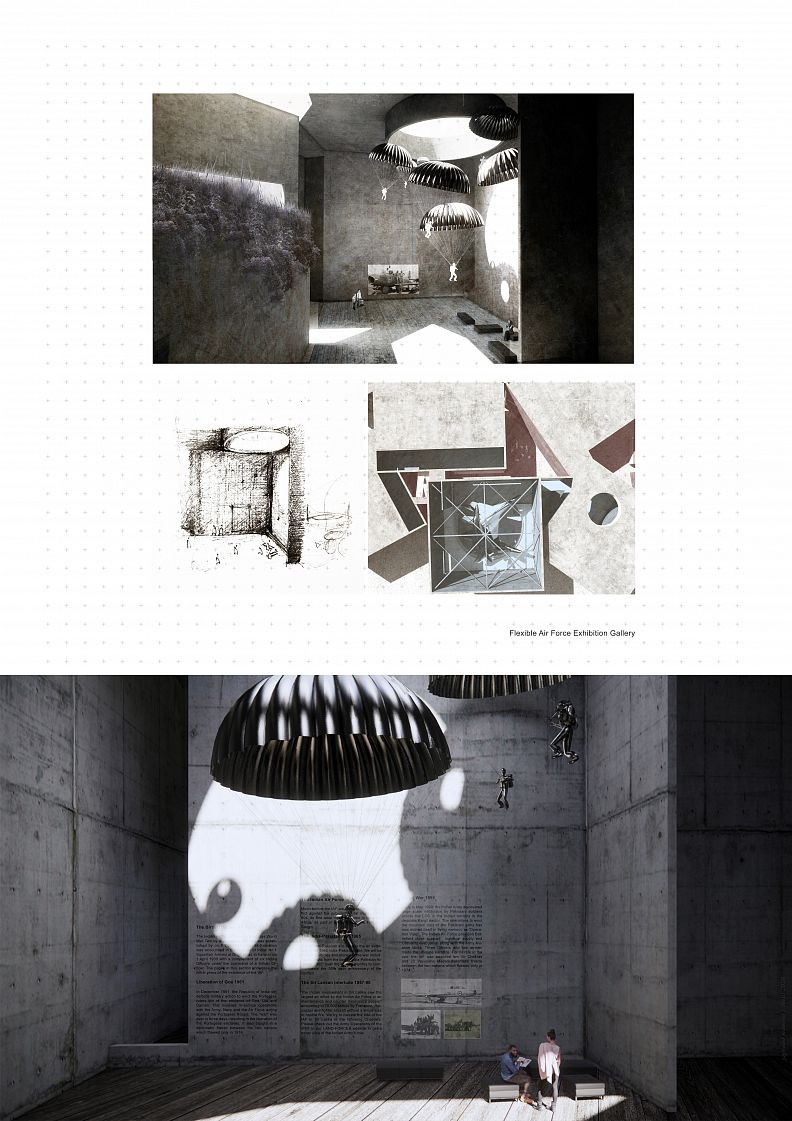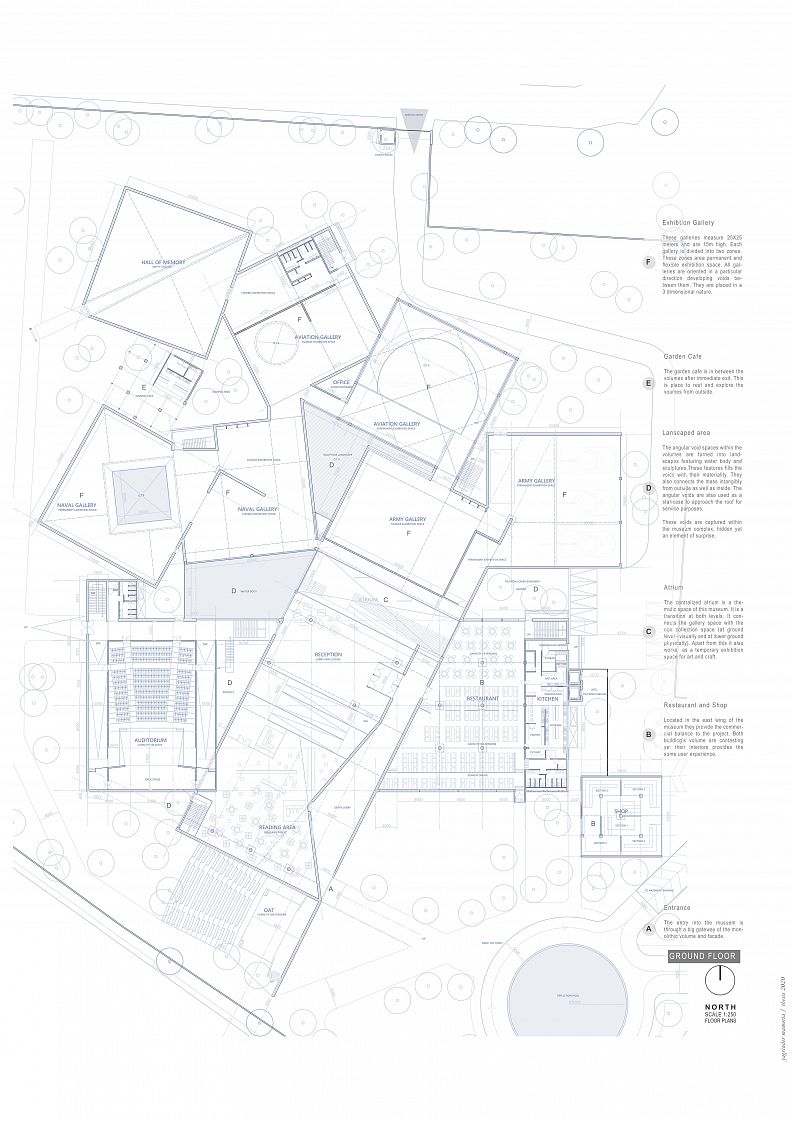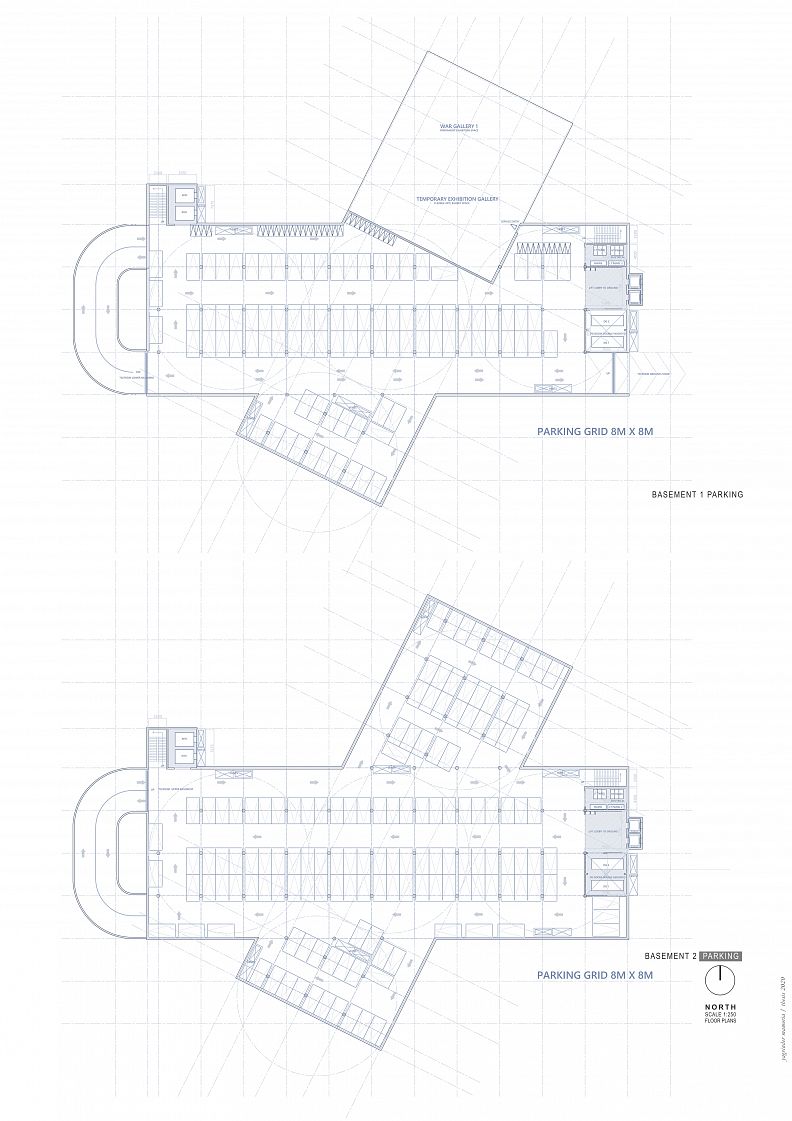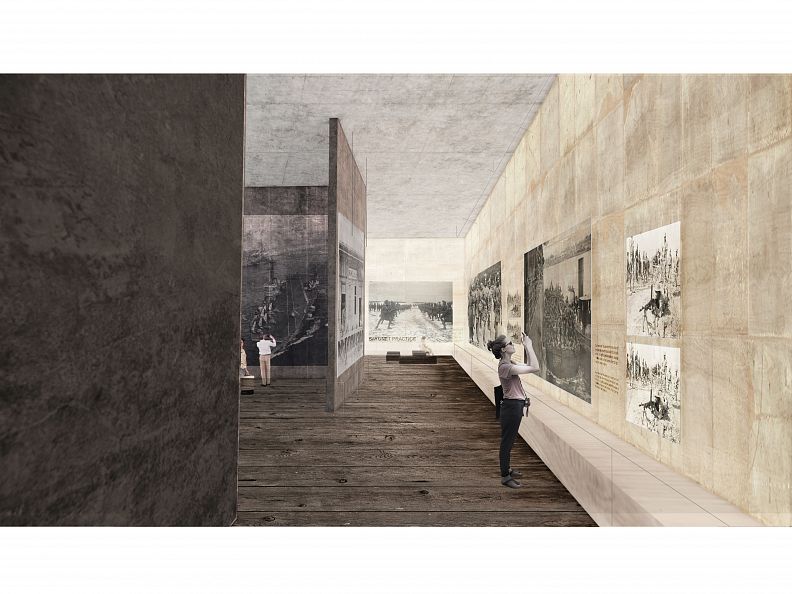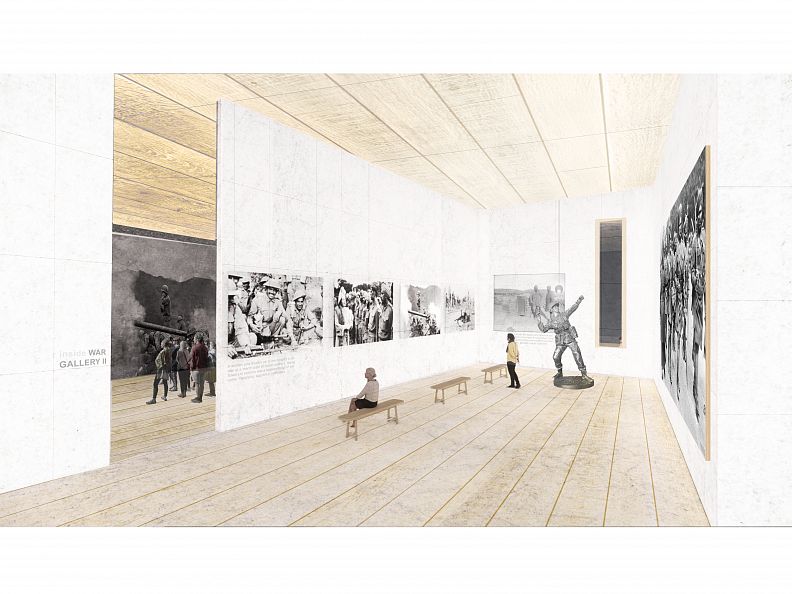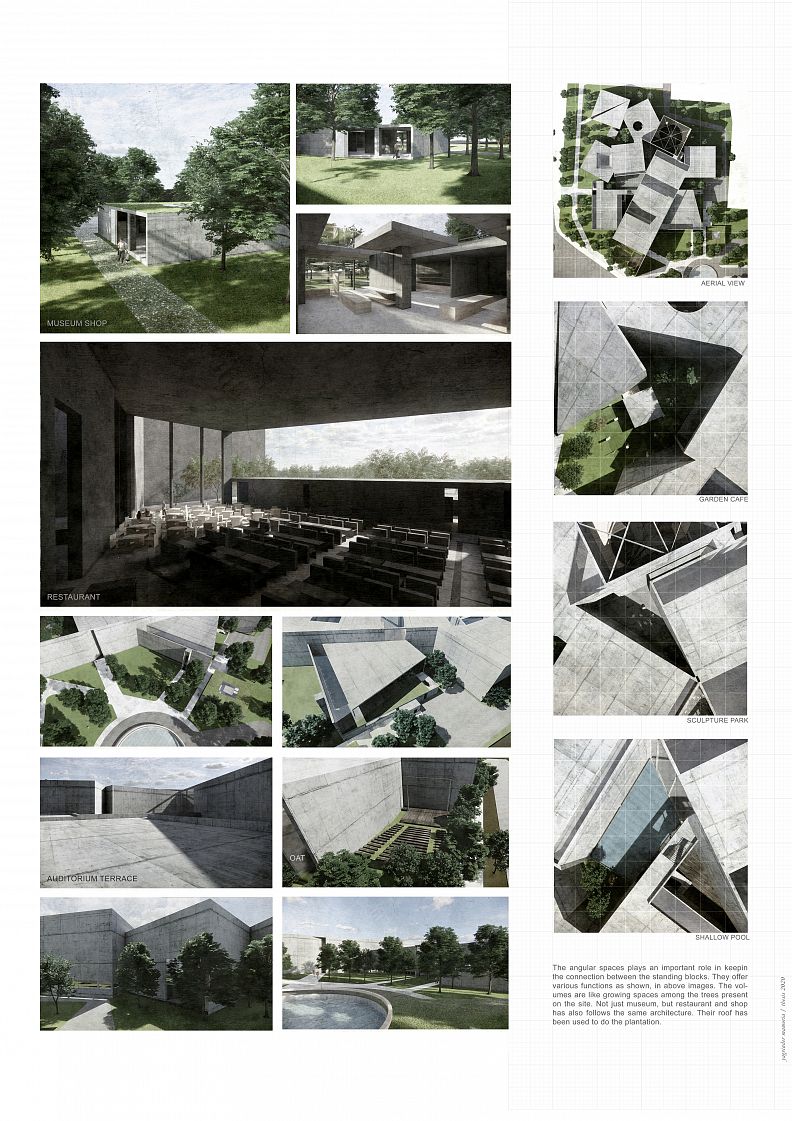National War and Military Museum, New Delhi, India

Project idea
My dissertation on the museum as an urban catalyst in the research made me realized that though there are many active socio-cultural facilities present in our country only a few succeed to call themselves as a catalyst. In India, we have many buildings that bring out the identity of our culture on a global level. Being myself from a military background family, I somewhere felt of a need for a museum that can build the urban context in such a way that it provides a national identity to our soldiers who fought various wars and did successful operations even before our independence. People need to feel this emotion. The bridged between a soldier and a civilian can only be linked by portraying the military’s glory and their participation. This lead to the idea of designing a War and Military Museum.
The aim was to design a National War and Military Museum and portray the Indian war and military culture, customs, traditions, and history through architectural spaces and volumes and develop a national identity for the same.
Project description
1. Site:
The site is in the capital of India, New Delhi. (North of India Gate) The surrounding local architecture follows the Indo-Saracenic (Indo-Gothic).
2. Spatial organization :
The spatial organization of the museum is a juxtaposition of cuboidal volumes (25m X 25m). This creates the triangular space between them which has been as used "Nukkad" to portray a story by inscriptions and sculptures. All these volumes are arranged by following the axial connections of Old Delhi with New Delhi and their parallel alignments. The main central block is aligned in the axis which connects Red Fort with India gate.
The overall complex does not surpass the scale of India Gate, National memorial monument.
The museum is zoned in two levels which are divided by a central atrium and all spaces are arranged in a 3-dimensional configuration. The upper level contains the Armed forces gallery and the lower level has the war galleries.
Hall of memory: Designing emptiness
Except for all other spaces, The roof of Hall of memory is inclined and space is filled only with the light.
The terrace of the auditorium gives a direct visual sight of India Gate.
3. Thought: Thematic spaces + In-between spaces:
The concept of Indian architectural spaces can be narrowed down into three prime elements- terraces, courtyards, and pavilions.
These spaces are thematic spaces. These are defined as those elemental spaces (courtyards, terraces, and pavilions) which run across the building either in facade or building’s layout. They retain the continuity and scale of the whole structure.
All these elements are translated into different other large spaces. They support the cultural needs and climatic needs, especially during summers. The can act as a space within themselves or transitions spaces such as Ghats and step-wells thus acting as in-between spaces too. The community interactions, social meets-functions, breathing space within a built environment, playing area are few variants of the uses of these spaces.
In-between spaces-These spaces are physical space which refers to a physical change by separating two distinct areas that have different spatial qualities. It is a connection between inside and outside; in and out; water and land (step-wells).
Technical information
1. Site area: 6.33 acres: 25638 sq.m
2. Site Land use: Social-Cultural facilities (According to DDA Master plan 2021)
3. Broad requirements:
a. War galleries, Armed forces galleries (Flexible + Permanent spaces), Hall of Memory, Temporary exhibition space, Workshop, Auditorium, Library, OAT, Cafe+Restaurants, Museum shop
4. Space percentage allocated
a. Exhibit Galleries – 55%
b. Administration + Management – 5%
c. Other Public Facilities (Auditorium, Cafeteria, Library, etc) – 20%
d. Utilities – 20%
5. Areas
a. Total built-up: 3.51 acres: 14230 sq.m
a.1: Lower ground floor: 6369.31 sq.m
a.2: Groud floor: 7587.39 sq.m + 271.2 sq.m(Audi upper deck)
b. Ground coverage: 34% : 8716.32
c. FAR: 0.50
d. Height: 15m
e. Parking: 360 ECS - two basements
6. Architecture: Construction + Materialism
Following the post-war architecture, postmodernism, the structure is made of reinforced black concrete, steel, and wood. Black concrete or the pigmentation is done for the aesthetics. Functionally it works similarly to the conventional concrete. Due to pigmentation, there is a 1% increase in water absorption capacity, a 20% increase in compressive strength. There might be a reduction in bulk density.
Warren truss + green roof:
The roof of the museum is a composite; a green roof and an industrial roof. This allows the roof to carry the weight of the hanging aircraft and objects through the grip-lock system.
Facade:
For the facade, the cladding has been done with the panels made out of papercrete (and experimental material: a mixture of paper and concrete). The panels are 1200 x 800 mm. They are light in weight and add raw concrete texture to the exteriors. The facade is monolithic with fewer openings to the street.
Light + Ventilation:
Maximum diffused natural light has been invited through roofs and glazing in East and Northside, Blocking south-sun completely. The opening is created in West and East direction to invite cross ventilation and creating wind tunnel for monsoon winds of Yamuna river.
